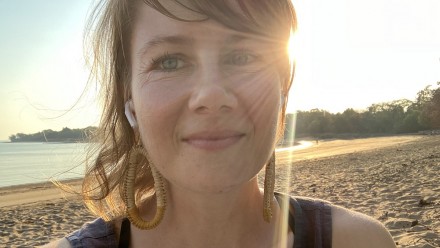Infectious Disease, Radiology, Paediatrics, Anaesthetics, St Luke’s International Hospital, Tokyo, Japan
I loved my elective experience at St Luke’s International Hospital, Tokyo. I was so excited to go for a few reasons:
- Being half Japanese, some of my family live in Tokyo, so I was looking forward to seeing them over a longer period of time than my usual sporadic visits.
- St Luke’s has a fantastic reputation in Japan.
- Several students in the years above me had gone and told me I had to go.
Coming from a long-term rural year in Bega, it was a huge change to go to a private, tertiary hospital in the middle of one of the most populated cities in the world.
My rural year was wonderful, but one aspect many rural students worry about is not getting enough experience with rare cases or advanced treatments that only occur in tertiary hospitals.
I found the combination of a rural year, then a complete change for my overseas elective to nicely complement each other.
At St Luke’s, I saw many rare paediatric haematological cases, robotic surgeries projected in 3D, and a case of ocular TB (which was also the patient’s first presentation of TB)!
The electives program at St Luke’s is structured so that I went to a different department for each week of the four weeks.
I chose to go to Infectious Disease, Radiology, Paediatrics and Anaesthetics. I would recommend all of these departments for not only the varied and interesting cases, but the people.
All the consultants I met were extremely impressive, they all spoke fluent English and had also worked in America.
However, the highlight for me was how welcoming the staff were. It seemed like a priority to them that I was enjoying not only my placement but my time in Japan in general; there are too many examples to write, but each department invited us out to dinner, and many people would purposely take time out of their day to ask how I was going.
Although the language barrier was difficult (I can only speak basic Japanese), it was much easier than I expected. There are several reasons doctors at St Luke’s can speak English. It seems to be a general aim for Japanese junior doctors to eventually work in America. Many junior doctors were studying for the USMLE, with the aim of working in America and then returning to Japan, like their consultants.
St Luke’s is also the go-to hospital for foreigners in Japan due to its name and reputation. One of my take homes was how difficult it is for non-English speakers to practice medicine in a world where academic information is mostly published English. And then, how impressive it was to see every doctor able to switch between English and Japanese, using the same resources we do, like UpToDate, to look up conditions and treatment, then switch but to Japanese to discuss the case with their patients or other doctors.
All in all, I thoroughly enjoyed my placement and made some great friends in the process.














